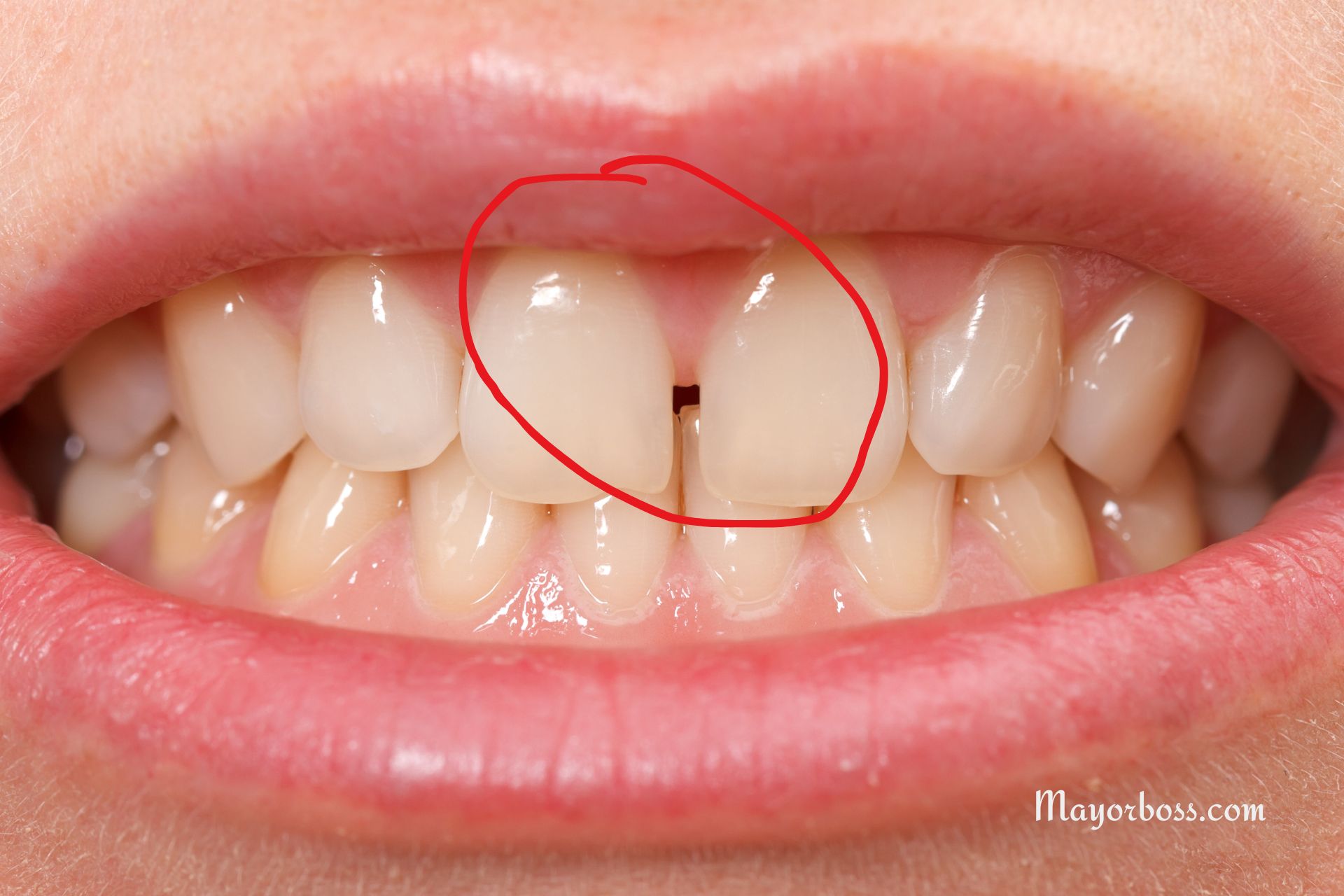What is Diastema? How to Fix Small Gap Between Your Front Teeth
Diastema is a term for a gap or space between teeth. It most commonly appears between the front teeth. Many people notice this space and wonder if it might cause problems or if they should get it fixed. A diastema can develop because of genetics, tooth size, or even certain habits like thumb-sucking. Some people choose to fix it for cosmetic reasons. Others may need to correct it if it affects their bite or gum health.
In this article, we will discuss the causes of diastema, when to consider treatment and the ways dentists can fix small gaps in the front teeth.

Causes of Diastema
Genetics
Your genes can determine your tooth and jaw structure. If your teeth are small in relation to your jaw size, extra space may appear between them. This mismatch can run in families. If both of your parents have gaps in their front teeth, you may also develop a diastema.
Habits
Thumb-sucking or using a pacifier past the toddler stage can change tooth alignment. These habits place pressure on the front teeth, pushing them forward. Over time, this forward force can widen the space between the front teeth. Other habits, like consistent tongue thrusting during swallowing, can produce similar gaps.
Gum Disease
Advanced gum disease, also called periodontitis, can lead to bone and gum tissue loss. When teeth lose support, they may shift and create gaps. This issue can progress over time if left untreated. Bleeding gums, persistent bad breath, or loose teeth can indicate gum disease. Regular dental checkups and proper oral hygiene help prevent this condition.
Frenum Attachment
A thick piece of tissue called the labial frenum connects the inside of your upper lip to the gums above your front teeth. If this tissue is too large or grows too far down, it can push the teeth apart, causing a gap. A simple procedure to trim or adjust this tissue may help close the gap.
When to Consider Treatment
A diastema by itself may not harm your oral health. If you like the look of your gap or it does not pose any risks, you may not need to do anything. However, there are times when closing a diastema can help preserve or improve oral health:
- Bite problems: Some gaps affect the way your teeth meet when you close your mouth. Fixing the gap might improve your bite, which can reduce strain on your jaw.
- Gum health: Spaces between teeth can lead to pockets of plaque that are harder to clean. Correcting the gap might make it easier to maintain good oral hygiene.
- Cosmetic reasons: A gap might affect self-esteem, leading people to seek treatment for a better smile.
How to Fix a Small Gap Between Front Teeth
Orthodontic Treatment
Braces or clear aligners are common choices for closing gaps. These devices gently move the teeth over time, bringing them into proper alignment. Traditional braces use metal brackets and wires, while clear aligners use removable trays made of transparent plastic. Both methods can yield results, though aligners may be more convenient since you can remove them for eating and cleaning.
Dental Bonding
Bonding uses a tooth-colored resin to build up the sides of the teeth, closing the gap. The dentist roughens the surface of your teeth, applies an adhesive, and then sculpts the resin. After shaping, the resin hardens under a special light. Bonding is quick, often taking just one visit, and typically does not require removing tooth enamel. But resin can stain or chip over time.
Veneers
Veneers are thin shells made of porcelain or composite material that cover the front surface of your teeth. The dentist removes a small amount of enamel so the veneer fits naturally and does not feel bulky. Veneers resist stains, so they maintain their color for a long time. Although they can be more expensive than bonding, they typically last longer and look very natural.
Dental Crowns
A dental crown covers the entire tooth. Dentists usually recommend this option if your tooth has damage, like a crack or large filling, in addition to the gap. The crown can reshape the tooth and close the space. Crowns often consist of porcelain fused to metal or full ceramic, offering durability and a natural look. Dentists aim to match the crown’s color to your other teeth.
Frenectomy
A frenectomy is a minor surgery that removes or adjusts an oversized labial frenum. If this tissue is the root cause of your diastema, a frenectomy may help. However, by itself, a frenectomy will not always close the gap. Orthodontic treatment or other procedures might be needed after healing if the teeth remain separated.
Prevention and Care
- Practice good oral hygiene: Brush your teeth twice a day and floss daily to protect your gums from infection. This prevents shifting caused by gum disease.
- Address harmful habits: If you or your child frequently sucks a thumb or pushes the tongue against the teeth, consult a dentist. They may recommend an appliance to discourage these habits.
- Regular dental visits: Routine checkups and cleanings help spot early signs of gum problems and manage any tooth alignment concerns.
Takeaway
Diastema is a gap between teeth, most visible between the two front teeth. It can occur from genetic factors, habits, gum disease, or a large frenum attachment. Treatment depends on personal preference and overall oral health needs. Many methods, such as braces, bonding, veneers, or crowns, can close the gap. If a thick frenum is the cause, a simple frenectomy may help. When deciding on a procedure, talk with a dentist about the benefits, cost, and best way to care for your smile.
